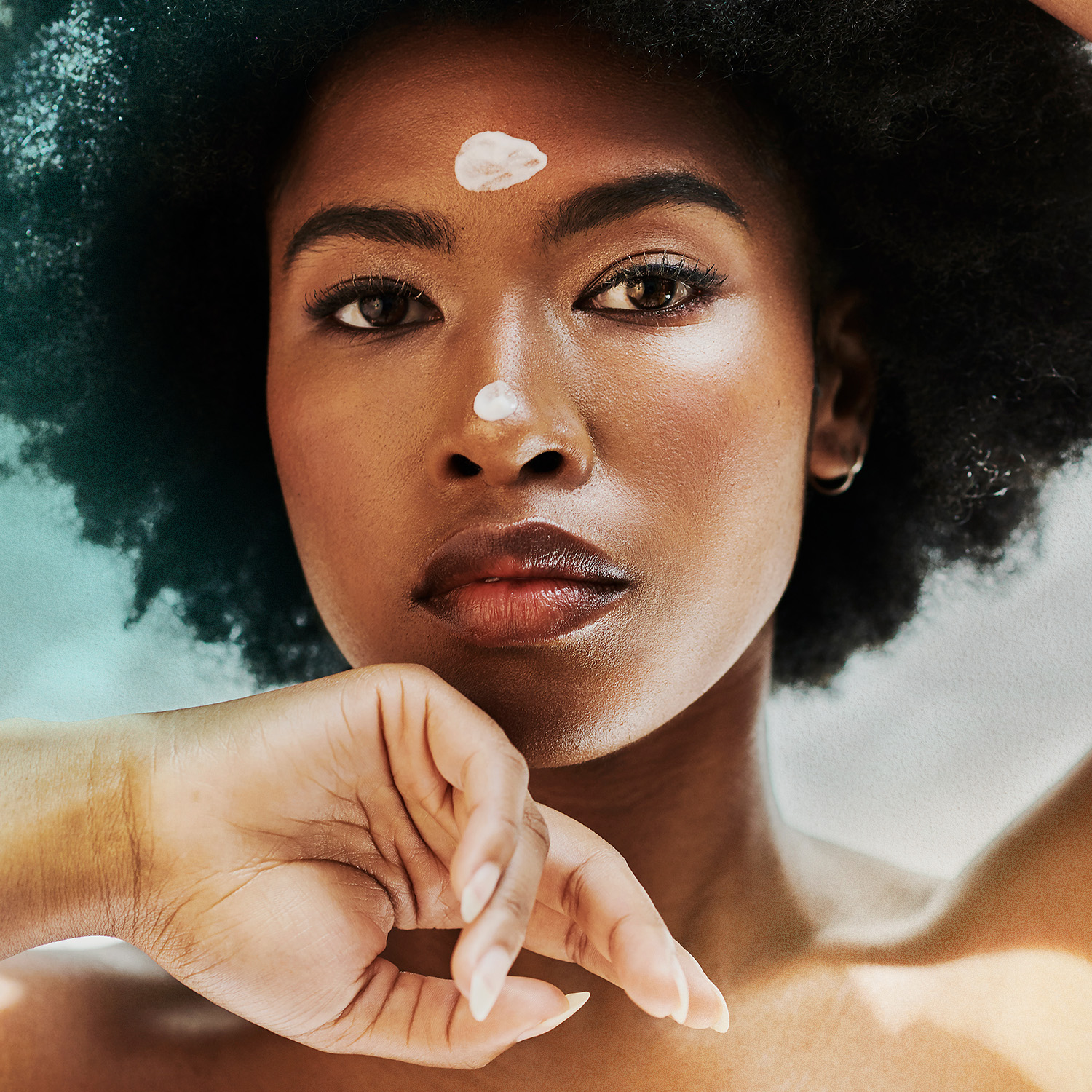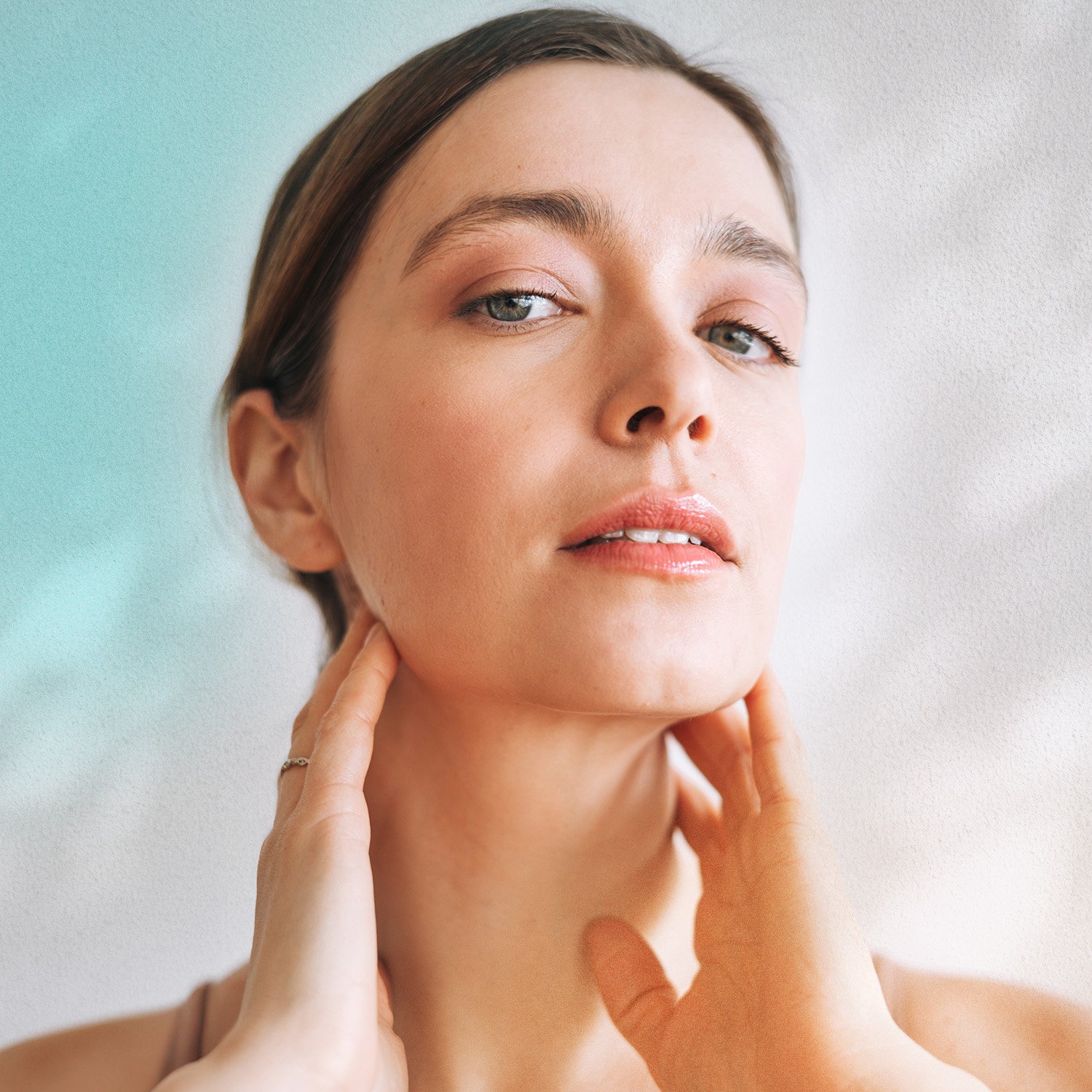
There are two types of morning beauty routines: The ones worthy of a short documentary, with multi-layered steps and a designated face serum, cream, or tincture for each, and the ones condensed into what’s lovingly called a “five minute face.” Scanning Sephora or Ulta shelves is a dream for the multitaskers in the second group—especially if they want a shortcut to protection from the sun's skin-damaging UVA and UVB rays, without actually having to slather on sunscreen each day during the summer.
People in both categories—or some middle ground between the two—are likely overlooking sunscreen in their daily routine. Studies estimate that as many as a quarter of American women "never" wear sunscreen. In some cases, it might be because their makeup seemingly gives them permission not to. Everyone from clean beauty upstarts (like Saie or Ilia) to celebrity-fronted ventures (like Selena Gomez’s Rare Beauty or Rihanna's Fenty) to top shelf classics (like Nars, Laura Mercier, or Estée Lauder) carries SPF-enhanced makeup that comes off like a sunscreen replacement. Several levels up from the two-in-one shampoo-body washes in showers across America, their veritable mountain of SPF-rated foundations, concealers, and even eyeshadows claim to let you have a flawless complexion and stay sunburn-free while you're at it.
In theory, SPF-rated products should do for morning makeup application what installing a laptop desk on a Peloton bike does for squeezing in exercise and emails: save time without sacrificing efficiency. For get-ready-quick types, the "with SPF" label alone is a pass to cut daily sunscreen application from their lineup. For people who don't even realize sunscreen is a daily, derm-recommended skincare requirement, the label feels like a sign they're going the extra mile to protect their skin from sun damage. Either way, shoppers are buying into the shortcut these products offer: In a Grand View Research study, SPF foundations had clinched the largest share of the $1.5 billion suncare-cosmetics market in 2022.
Studies estimate that as many as a quarter of American women 'never' wear sunscreen. In some cases, it might be because their makeup seemingly gives them permission not to.
According to the dermatologists, cosmetic chemists, and makeup artists we spoke to, any lineup that includes sun protection is better than none at all. But when makeup with SPF is used in sunscreen's place, it doesn't totally have you covered. In fact, leaning on multitasking products alone can leave you vulnerable to the same risks that come with skipping sunscreen altogether: more skin damage (and, worst-case scenario, skin cancer) in the long run.
When “With SPF” Falls Short
It doesn't matter where you live, who's on your personal moodboard, or which beauty brand has your loyalty: Dermatologists say you're probably not doing enough to protect your skin from the sun's worst effects, and makeup alone isn't a reliable substitute.
Dr. DiAnne Davis, M.D., a board-certified dermatologist with a private practice in Southlake, Texas, doesn't blame her patients for wearing little more than foundation when they step outside: “Most people think it’s sufficient to wear makeup that includes SPF. They believe that it will provide the same coverage and protection as using sunscreen alone,” she says.

But just like multitasking at work or at home, trying to combine steps is less effective in the long run. For starters, Dr. Melissa Levoska, M.D., a dermatologist and associate professor of dermatology at Mt. Sinai in New York City, says, most cosmetics don’t have a high enough SPF rating to avoid skin damage from the outset. Several brands’ start at SPF 15 or SPF 20, which is only enough to protect skin for brief periods in direct light without reapplying. (Surveying Sephora’s offerings, only 10 out of 50 foundations with SPF had an SPF rating of 35 or higher.)
Foundations with higher SPF ratings are often missing the “broad-spectrum” qualifier indicating that they will protect skin against both UVA and UVB rays. Without that label—often hidden in a tiny font on the back of the product's box—you’re set up for a higher risk of skin damage. And if you're not taking a magnifying glass to the ingredient list, you might even miss it.
The testing process applied to all sun protection products is also partly blame. “Many skincare companies slather on an extra thick layer of a product when testing for SPF—in the real world, most people usually are not applying that much sunscreen to their face,” Dr. Davis says.
By cosmetic chemist Ginger King’s estimate, an SPF 30 foundation is about as effective as SPF 15 out of the lab, where consumers assume a thinner layer is plenty. But adequate coverage from SPF-enhanced makeup alone would require “generally more than most people apply with a typical application,” says Dr. Marisa Garshick, M.D., a board-certified dermatologist seeing patients in the greater New York City.
Many skincare companies slather on an extra thick layer of a product when testing for SPF—in the real world, most people usually are not applying that much sunscreen to their face.
All those potentially thick, cakey layers aren’t aligned with the way makeup is designed for different facial features (or a smooth, even complexion). On some sections of your face, you stack foundation with blush, bronzer, or highlighter; on others, you wear nothing but a smidge of concealer on top. When makeup with SPF is applied unevenly, Dr. Lauren Penzi, M.D., a dermatologist with MDCS Dermatology: Medical Dermatology and Cosmetic Surgery in New York, says, it leaves some sections of the skin more susceptible to damage than others. This effect is only amplified when you're doing light touch-ups throughout the day. “Sunscreen needs to be reapplied on average every two hours, and most people obviously aren't reapplying their makeup,” she adds.
But if you’re avoiding a layer of heavy CopperTone beneath your prestige makeup, you’re not alone. Foundation or concealer by itself does have its in-the-moment benefits. “Despite advances in sunscreen technologies, layering sunscreen with makeup sometimes is not as pleasing in skin feel,” King says, “so a product with SPF 30 built in makes it nicer for application.” It’s a tradeoff: a less sticky or heavy stack of facial products now, or less sun damage later.
Be prepared for one last, sneaky caveat if you stick with SPF-enhanced makeup alone: Combining two products into one is a recipe for missing the best-by date. Ingredients in sunscreen and makeup don’t always have equivalent shelf-lives, even when they're mixed into the same bottle. “If someone is using makeup that is really old, they may have the false impression that they are protected when in reality, the sunscreen [in it] has already expired,” Dr. Davis explains.

The SPF Solution
It's not realistic to assume you'll read one article (or an entire sunscreen package) and never skip real SPF again. Habits are hard to break; life gets busy; and sometimes, even the five seconds it takes to put on sunscreen feels like a hassle.
In multitaskers' defense, you can get away with only wearing the makeup-mixture version of SPF at times, King and Dr. Penzi say. The more time you're spending inside and away from extended sun exposure, the less reliant you need to be on full SPF, they say. (Sit next to a bright window at your office all day, and then you'll need to double up—the sun's rays aren't weakened by glass.)
Few among us spend all their time strictly indoors and in the dark, though. In reality, you’ll be spending plenty of time outside as spring turns into summer—and every time you don't wear sunscreen increases your risk of skin damage.
Every dermatologist who spoke with Marie Claire ultimately recommends the longer application route as a result: applying about two fingers’ length-worth of sunscreen between your A.M. skincare (like moisturizers or serums) and your makeup, SPF-enhanced or otherwise. It's not just derms who endorse an all sunscreen, all the time mentality: Mia Dondero, a Los Angeles-based makeup artist, says she “always” has sunscreen layered between her and her clients’ skin and their full, camera-ready faces.
There’s scant-but-positive evidence that layering more products is even more effective than using SPF or SPF-enhanced makeup alone, anyway. A 2021 study concluded that doubling up on makeup and sunscreen enhances the latter’s overall ability to prevent skin damage. (Comparable research on the effects of SPF-enhanced makeup hasn’t been released before or since.)
If someone is using makeup that is really old, they may have the false impression that they are protected when in reality, the sunscreen [in it] has already expired.
Going a step further with extra coats above your makeup will vary from routine to routine. “It depends on the SPF in the foundation, how much foundation is applied, and where the foundation is applied that determines if additional sunscreen is needed,” Dr. Levoska says. But if your preferred product has a low SPF to begin with, make sure you add all-over face and neck coverage with an extra sunscreen. The skin near your face is just as susceptible to damage from sun exposure—and it's not like you're coating your entire neck in foundation.
Besides, you can have lasts-all-day sun protection and a carefully composed makeup beat at once even without leaning on a multitasking product. Powder or spray-on sunscreens, recommended by both Dr. Penzi and Dr. Davis, are easy-to-apply solutions that settle on top of a full face of foundation, concealer, and eye makeup.
SPF-enhanced makeup's shortcomings won't have them removed from shelves. In fact, brands are only leaning into them more. Over the course of reporting this story, Fenty released a new tinted moisturizer rated SPF 30 and Supergoop!'s SPF 40 tinted sunscreens arrived at Sephora. But the next time you reach for just one of those products alone, take a beat. Makeup can correct and enhance what you have, but it can't yet protect you like sunscreen can. When it comes to the real thing, there's no substitute.
This story is part of our So, Let's Talk About Sunscreen package, our guide to what you need to know to stay safe in the sun. You can read more here.







